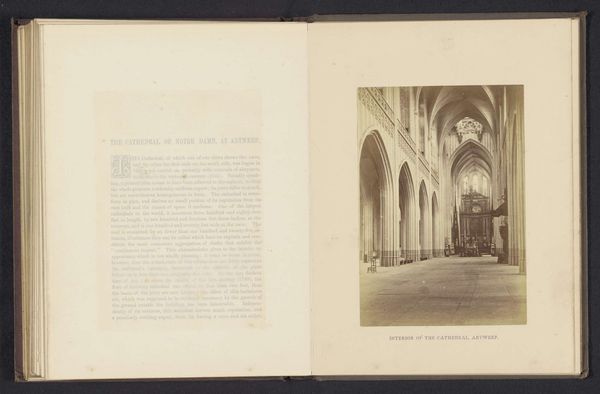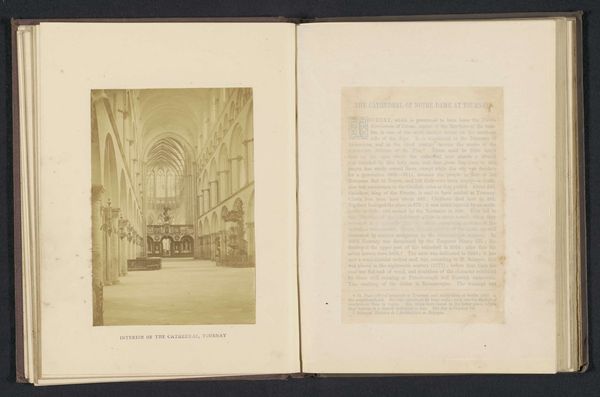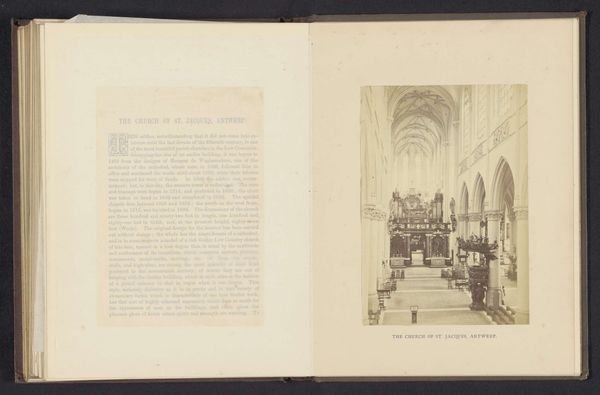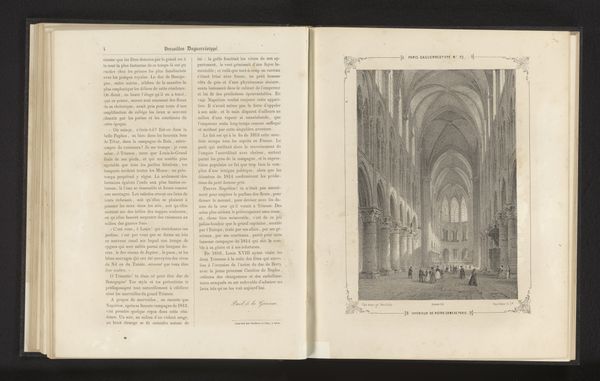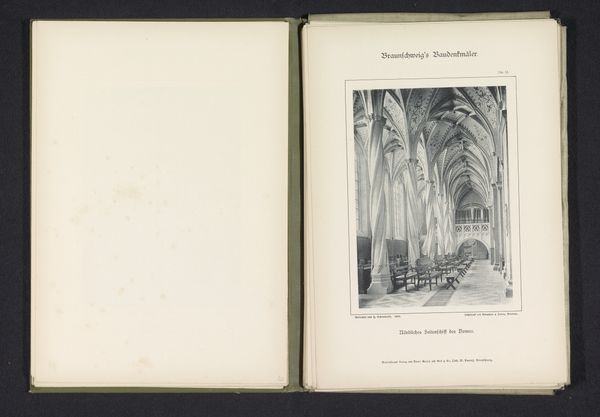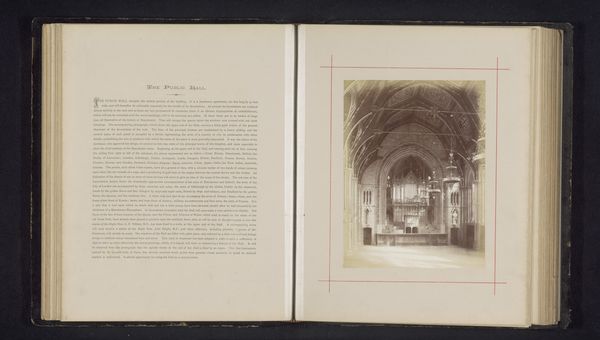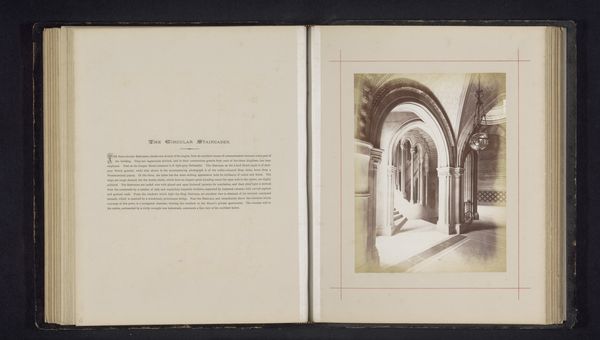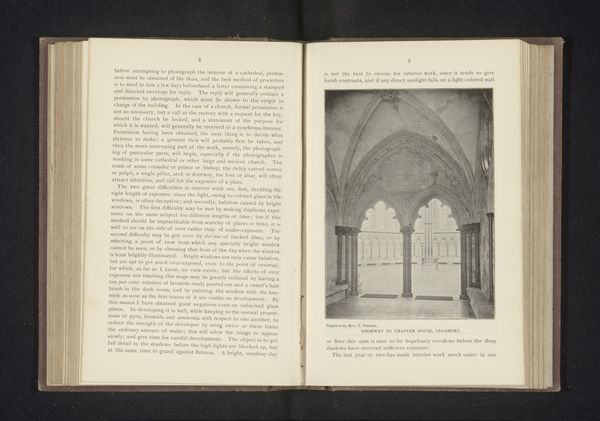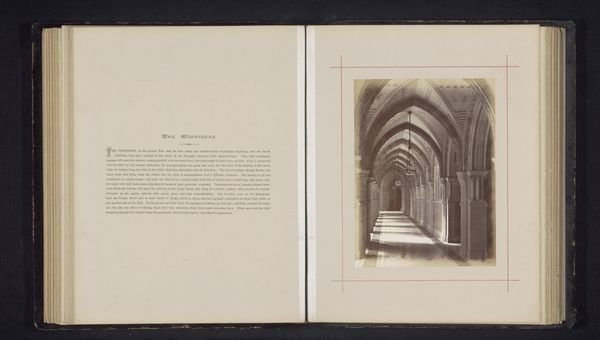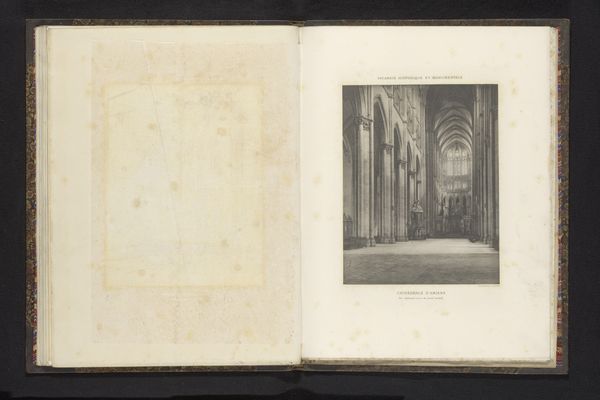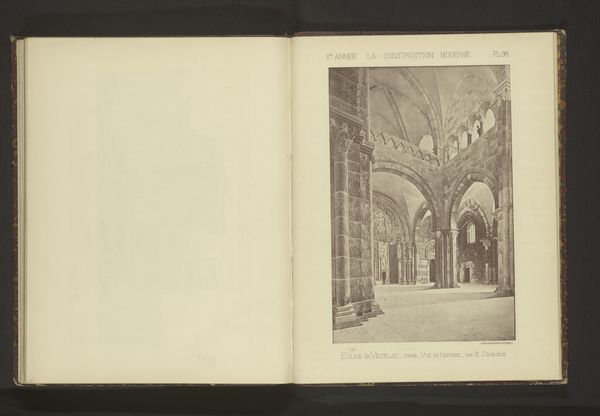
photography, gelatin-silver-print, architecture
#
photography
#
romanesque
#
gelatin-silver-print
#
cityscape
#
architecture
Dimensions: height 165 mm, width 114 mm
Copyright: Rijks Museum: Open Domain
Curator: This gelatin-silver print captures the interior of the Antwerp Cathedral. It is entitled “The triple aisle, Antwerp cathedral,” and we believe it was created sometime before 1866 by the studio of Cundall & Fleming. The photograph offers a view down the length of the cathedral's nave, highlighting its soaring Gothic architecture. Editor: The composition creates such an incredible sense of depth and grandeur! The rows of columns recede into the distance, and the light filtering through the high windows really accentuates the cavernous space. It definitely evokes a sense of awe and spiritual contemplation. Curator: What is interesting about a piece like this, taken in the mid-19th century, is to see the power structures at work. We can see how images like these shaped perceptions of power, piety, and imperial reach. By displaying the grandeur of religious institutions, what political and ideological positions do you think this reinforces? Editor: The aesthetic and historical factors shaping these early photographs are always something to take into consideration. As a symbol of colonial power and wealth, what social responsibilities did churches uphold? Or, more relevantly, how did those actions diverge from religious teachings? It’s worth understanding how places of worship were funded, especially when so many faced inequalities in accessing these religious spaces due to social, economic, and gender constraints. Curator: Precisely. In examining photographs like "The triple aisle," we need to explore how the representation of such spaces contributes to broader discussions about power, access, and identity within religious institutions and within society more broadly. This includes recognizing not just the aesthetic appeal, but the complex social dynamics and histories interwoven into these visual records. Editor: Exactly. Visuals are never unbiased documents, especially when considering their use and access at a specific historical moment. This also causes me to wonder what role it may play in re-evaluating what histories and narratives have been forgotten due to photography’s influence.
Comments
No comments
Be the first to comment and join the conversation on the ultimate creative platform.
